However, everyone has different needs and requirements for a camera. Whilst this camera is certainly impressive, you may be looking for something slightly different.
Perhaps you must be wondering:
- What features Do I Look for in a Good camera for Concert Photography?
Or
- How to take better photographs at concerts?
Keep reading to discover five of the best cameras for concert photography including the best for beginners and the most budget-friendly.
Best Camera for Concert Photography – Reviews
The best camera for concert photography should be able to capture high-quality images with quick response time, good low-light performance, and offer a wide array of lenses.
After testing five of the best on the market, we truly understand what makes the ultimate camera for concert photography.
Nikon D3500 – Best Concert Photography Camera Overall

The Nikon D3500 is a great choice for concert photography. With its long battery life, fast shutter speed, and low-light capabilities.
This camera is exceptional at helping photographers capture highly detailed images of performers on stage.
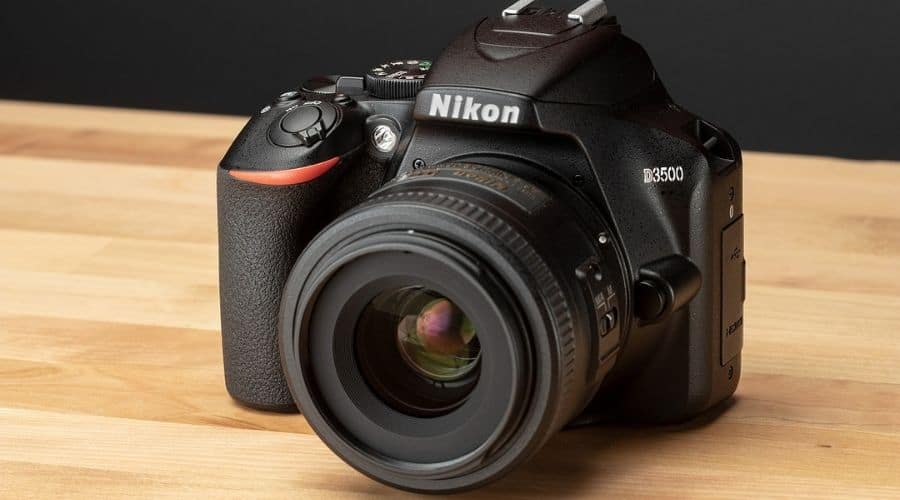
Low Light Performance – This camera features a powerful 24.2-megapixel DX-format CMOS sensor, which allows you to capture highly detailed images in low-light situations.
Close-Up Shots – With the close-up shots feature, you can get amazingly detailed shots of the performers and instruments.
Sensor Type – It has a Crop sensor.
4K Resolution – This camera does not support 4K recording but does offer 1080p videos at 60fps.
Fisheye and Wide Angle – A great range of Nikon wide-angle lenses allow you to capture the entire stage and all the action without having to move around too much. The Nikon 8-15mm lens is a great fisheye lens for concert photography whilst the 14mm-24mm is the best wide-angle lens for concerts.
Video Stabilization – Plus, with its advanced autofocus system, you can quickly lock onto your subject and take stunning shots even in the dimmest of lights.
Exposure Compensation – This camera’s exposure compensation allows you to adjust the amount of light entering your camera’s sensor so that it is appropriate for the situation.
ISO Range – The Nikon D3500’s ISO range is from 100 to 25600, giving you plenty of flexibility when shooting in different lighting conditions.
Battery Life – With its EN-EL14a rechargeable Li-ion battery, the Nikon D3500 offers up to 1,550 shots per charge and can be used for up to 990 shots in Live View mode. This feature has made the Nikon D3500 world-renowned as one of the most impressive for concert photography.
Sound – The Nikon D3500 is equipped with a built-in microphone that allows you to capture clear and quality sound. The mic is designed to provide a crisp sound, even in loud environments. The camera can record sound from up to 5 meters away, making it perfect for recording concerts or other live performances.
The camera also offers a wide range of features that make it ideal for capturing the energy and atmosphere of live music events.
“Offering excellent image quality and outstanding battery performance, the Nikon D3500 is sure to be your go-to camera for capturing beautiful moments at concerts.”
Sony a7 III – Best Concert Photography Camera for Quality and Features
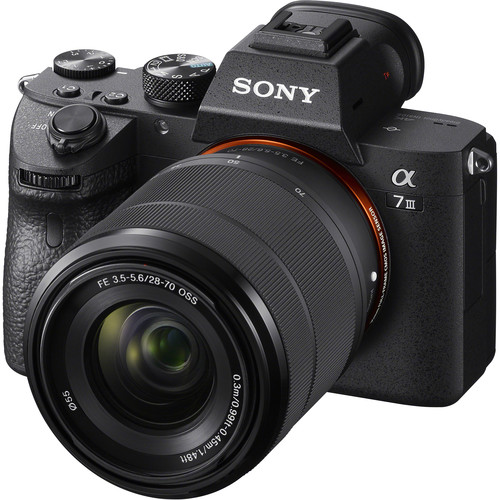
The Sony a7 III is a powerful camera for concert photography.
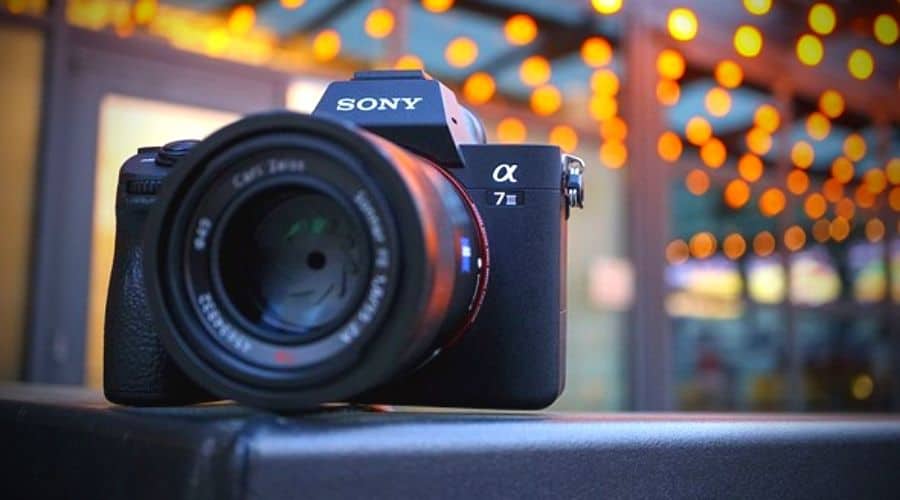
Low Light Performance – With exceptionally high ISO, the Sony a7 III is a superior product for low light performance.
Close-up Shots – Capture crisp and detailed close-up shots when paired with the right lenses. A Sony zoom lens offers great flexibility for capturing exceptional portrait shots over a prime lens. The Sony FE 70-200mm is an impressive choice that is also extremely lightweight.
Sensor Type – Boasting a 24.2-megapixel full-frame sensor, this camera ensures that you can take clear pictures even in difficult lighting conditions.
4K Resolution – Its 4K video recording capability ensures that you get the highest quality footage of performances.
Fisheye and Wide Angle – The Sony wide angle lenses are truly impressive allowing photographers to capture the entire stage and audience. However, whilst Sony lenses offer superior quality, they are some of the most expensive camera lenses on the market.
Video Stabilization – Features 5-axis optical image stabilization. With its advanced autofocus system, you can be sure to get sharp images of your favorite artists no matter how fast they move on stage.
Exposure Compensation – Features both auto exposure and an enhanced exposure compensation dial to manually adjust the brightness or darkness of an image.
ISO Range – This camera has a wide ISO range of 100-51,200 making it an ideal choice for capturing the details in concerts in dimly lit environments.
Battery Life – Up to 710 shots on a single charge or 610 when using the electronic viewfinder.
Sound – Whilst this mirrorless camera is not designed for videography, the sound quality is decent for amateur recordings. However, this camera can occasionally produce distorted audio.
“The Sony a7 III is a great choice for concert photographers who want to capture every moment of their subject’s performance in stunning detail.”
Canon EOS 6D Mark II – Best Concert Photography Camera for Affordability
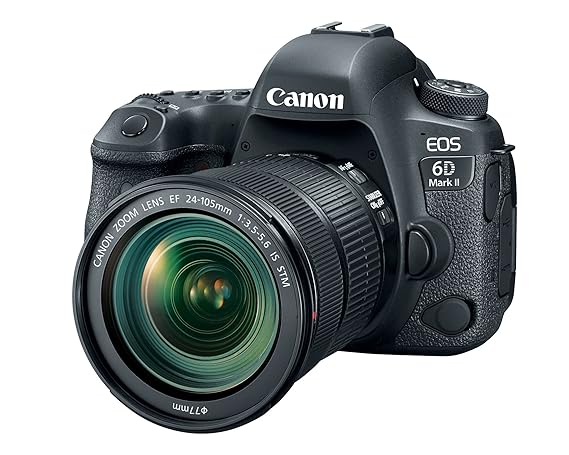
The Canon EOS 6D Mark II is designed to capture stunning images in low light conditions without compromising on image quality. It is an excellent budget-friendly camera at an affordable price tag.
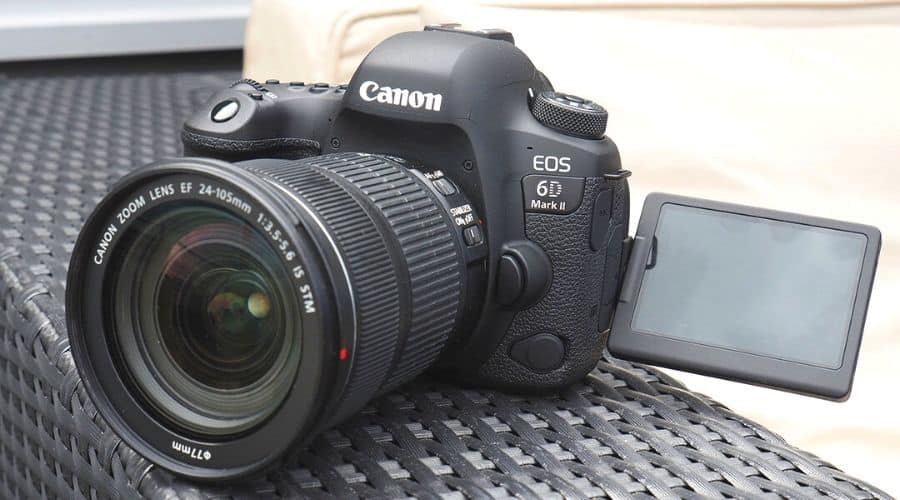
Low Light Performance – Performs exceptionally well in low light for a camera of its price
Close-Up Shots – The close-up capabilities help you get incredibly detailed shots, encapsulating the passion and energy of the performers.
Sensor Type – Full frame.
4K Resolution – Offers 4K resolution video recording.
Fisheye and Wide Angle – With a variety of wide-angle lenses, the Canon EOS 6D Mark II allows you to get the entire stage and crowd in one shot capturing the full atmosphere of the performance.
Video Stabilization – 5-axis electronic image stabilization for smooth videos and high-quality content. It also features a fast autofocus system, allowing you to quickly capture those fleeting moments on stage.
Exposure Compensation – An exposure compensation dial that allows you to adjust the exposure of your photos and videos easily.
ISO Range – 100-25,600 plus ISO ‘boost levels’ from 51,200-102,400.
Battery Life – Coming close to the famed Nikon D3500 in terms of battery life, the Canon EOS 6D Mark II is a great contender. Taking up to 1,400 photographs per charge, this camera allows you to snap away with no need to swap batteries.
Sound – Comes with a built-in mono microphone with a port for external connection.
“With these features, the Canon EOS 6D Mark II is perfect for capturing stunning concert photos and videos.”
With these features, this camera is perfect for capturing stunning concert photos and videos.
Sony Alpha a600 – Best Concert Photography Camera for Beginners
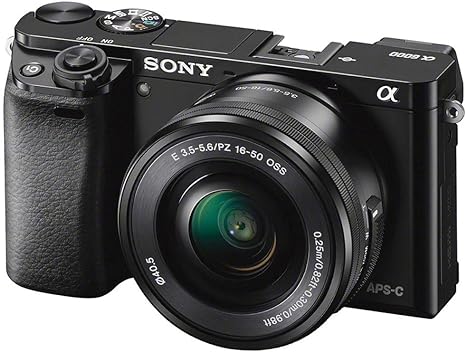
When it comes to capturing vibrant moments at concerts, the Sony Alpha a600 is an excellent choice. Easy to use and capture clear and crisp images even in low-light settings, this camera is ideal for beginners.
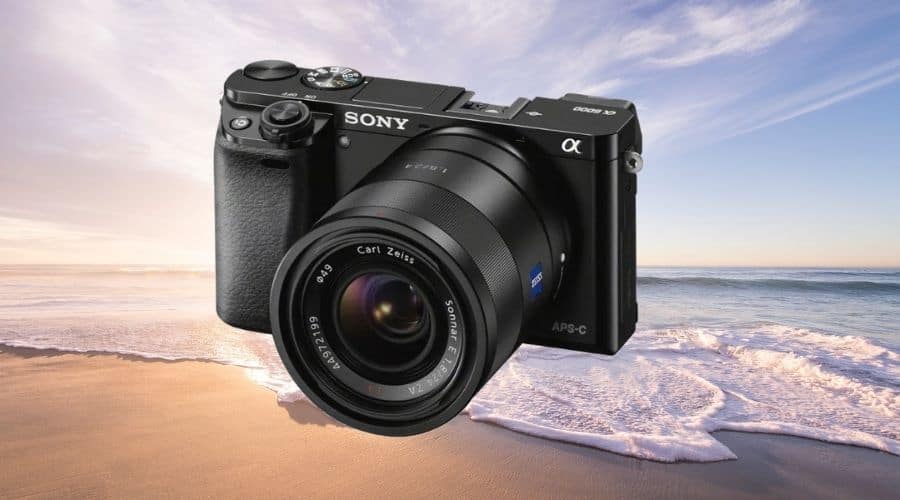
Low Light Performance – Performs well in low light. It also features an innovative Eye AF technology which is especially useful when shooting in low-light conditions.
Close-Up Shots – Great focusing for close-up shots. A Sony FE 70-200mm is a great lens choice for this camera.
Sensor Type – Crop sensor
4K Resolution – This camera does not support 4K recording. The video quality is not particularly impressive but decent for amateur footage.
Fisheye and Wide Angle – Supports the widest angle lens currently available for Sony cameras, Laowa 9mm, and a variety of 8mm fisheye lenses.
Video Sstabilization – Features Steadyshot technology, an image stabilization feature ensuring that the camera shake is minimized. So you can get sharp images even when shooting from a distance or in crowded areas.
Exposure Compensation – Great auto exposure for beginners with an option to manually adjust for more advanced photographers.
ISO Range – 100-25,600.
Battery Life – Up to 360 photos per charge.
Sound – Decent quality sound recording for amateur videography. This camera does not feature a port for an external microphone.
You can capture even the most dynamic moments of a concert with ease with its fast shutter speed and high burst rate.
The a600 also offers a variety of creative modes and filters to help you make your photos stand out from the crowd.
“Whether you are shooting at a small club or large arena, the Sony Alpha A600 will help you capture stunning images of your favorite bands and artists in action.”
Fujifilm X-T30 – Best Concert Photography Camera for the Size
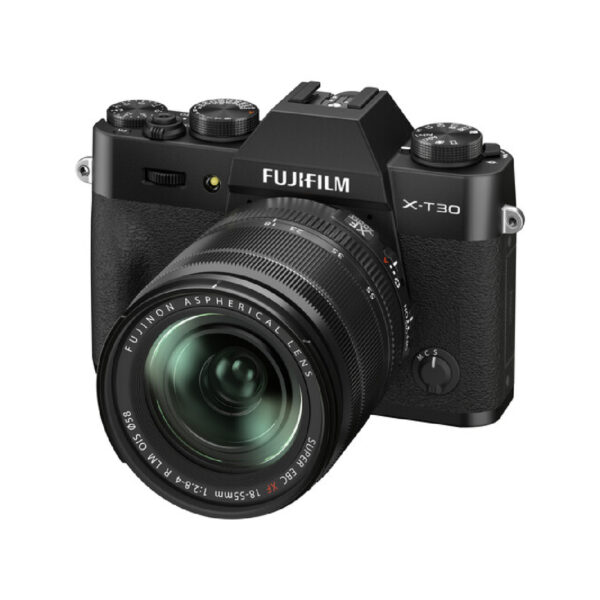
Fujifilm X-T30 is an excellent camera for concert photography, thanks to its 4K video capabilities and image stabilization.

Low Light Performance – Falls short on low light performance in comparison to the other 4 reviewed cameras.
Close-Up Shots – Fujinon 55-200mm is an exceptional close-up lens.
Sensor Type – Crop sensor
4K Resolution – Captures up to 4K. One of the best cameras for concert photography that also supports high-quality video capturing.
Fisheye and Wide Angle – Meikke 7.5mm is a great fisheye lens for this camera whilst this camera also supports the Laowa 9mm wide angle lens, the widest on the market.
Video Stabilization – This does not have built-in stabilization. It does however have exceptional auto-focus and face detection, so you can easily focus on the subject even in crowded venues which helps with footage clarity.
Exposure Compensation – Automatic and semiautomatic exposure compensation that can be controlled with the front dial.
ISO Range – 160-12,800
Battery Life – Up to 380 photos per charge.
Sound – Decent sound quality with a port for an external microphone.
Its compact size and lightweight design make it easy to carry around during events, perfect for the amateur photographer. Plus, its intuitive controls allow you to quickly adjust settings on the fly.
The X-T30 offers a wide range of shooting modes that can be used to capture the best possible shots at concerts.
However, whilst the camera performs at an outstanding level for focus and detail, it is the poorest on the list for low-light performance.
“The Fujifilm X-T30 is decent for personal photography but falls short at a professional level.”
How to Buy the Best Camera for Concert Photography
Having tried and tested five of the greatest cameras on the market for concert photography, it is clear that one outshines the rest.
Whilst it has some great competition, the camera that we found to be best for concert photography is the Nikon D3500.
However, whilst this camera is certainly incredible, every photographer has different requirements.
If our reviews haven’t swayed you in a particular direction, you might be wondering what to look for in a camera for concert photography.
There are specific elements that make the best camera for concert photography.
Low Light Performance
The most crucial element of a camera for concert photography is the ability to capture stunning photographs in difficult lighting conditions.

Whether it’s a dim light at an outdoor festival or dark venues, a camera with great low light performance can help you take beautiful photos that you won’t be able to capture with other cameras.
Cameras like the Nikon D3500 have excellent low-light performance and can handle even the most challenging lighting conditions. This makes them ideal for concert photography and other types of photography in dimly lit environments.
The cameras with an impressive ISO range and fast shutter speed are able to capture clear and vibrant images at dark concerts.
A camera with advanced technology in low light performance offers photographers the ability to take beautiful photos in any kind of environment and deliver excellent results, even in the darkest of venues.
Close-Up Shots
Close-up shots will make up around 95% of your concert photography portfolio. Therefore, the ability to capture close-up shots of performers and instruments with amazing detail is essential.
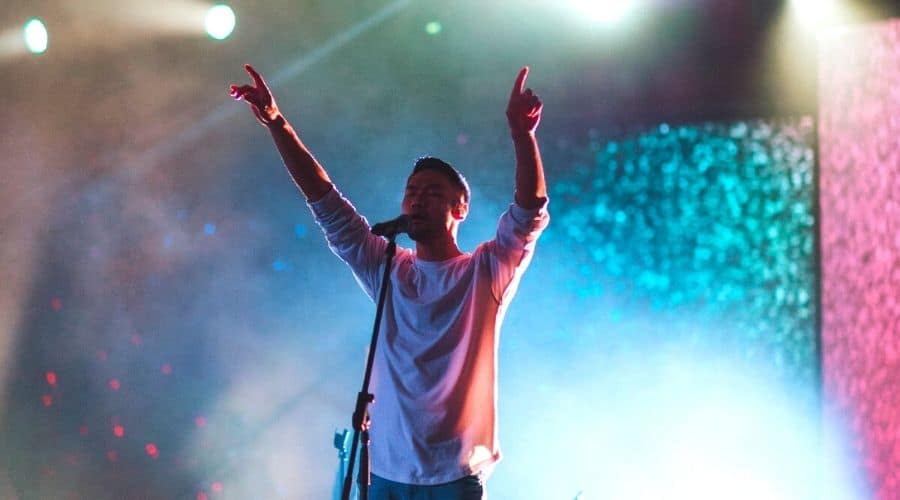
Advanced autofocus systems, fast shutter speeds, and high-megapixel sensors will ensure your close-up images are crisp, clear, and detailed even when shooting in low-light conditions.
Whether you want to take photos from the front row or from the back, these features will help to deliver sharp, close-up images with vibrant colors that will bring your concert photography to life.
For concert photography, a zoom lens offers greater flexibility for close-up shots than a prime lens.
Whilst every photographer has lens preferences, a 70-200mm lens is often the best zoom lens for concert photography. Combined with built-in close-up capabilities, this is an exceptional lens for close-up shots.
Whether capturing a performer’s expression or an instrument’s intricate details, a 70-200mm lens has got you covered.
Crop Sensor or Full Frame
For concert photography, a full frame is often considered to be key for capturing the best quality imagery.
When it comes to taking pictures in low light, full frame cameras offer much sharper, clearer images and less noise than crop sensors, thus giving you more detail and a superior result overall.
Full-frame cameras also allow you to capture more of the scene which is great for taking atmospheric shots of the stage.
However, for close-up images such as detailed photos of performers and instruments, a crop sensor is more advantageous. A crop sensor offers a more narrow field of view and is better for portrait shots.
For concert photography, it is about compromise as you have to choose one over the other.
The benefit of choosing a crop sensor camera is that you can use a full-frame lens but not the other way around.
For example, the Nikon D3500 is one of the best crop sensor cameras on the market. With advanced technology, exceptional low-light performance, and full-frame lens options, this camera can offer the same quality as many full-frame cameras on the market.
With a crop sensor, you have all the capabilities for greater close-up shots and portraits with the option to swap out lenses for a full-frame effect.
4K Resolution
For concert photography, excellent video quality is not essential unless you want to capture performance footage too. A camera capable of capturing crisp and clear footage with great detail, even in low-light conditions can enhance your options for capturing an event.
4K resolution is incredible for smooth, crystal-clear footage and unrivaled imagery.
However, if your primary use of a camera is for concert photography rather than videography, 4K resolution is not essential.
The majority of cameras on the market today offer a minimum of 1080p videos at 60fps. This quality is still exceptionally high and a great option if videography isn’t a top priority.
A camera with 1080p still gives you the option to record video at great quality.
Regardless of whether you choose a camera with 4K resolution or 1080p, a camera with these qualities is perfect for both amateur and professional videographers who want to create beautiful and memorable videos.
Fisheye and Wide Angle
To capture the electricity and energy of a performance, snapping a full stage picture is a great way of immortalizing the atmosphere. For this incredible shot, a fisheye or wide-angle lens is essential.
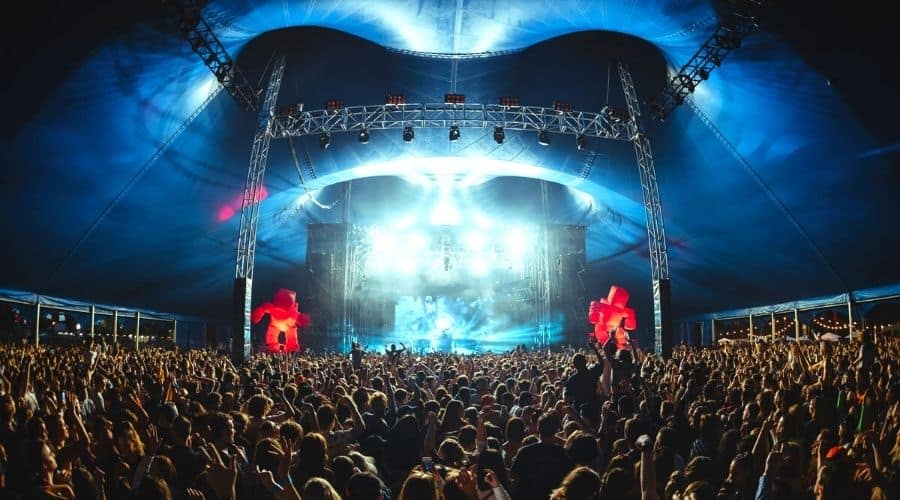
Which one you use is down to the effect you want to get.
A traditional wide-angle lens is perfect for capturing the stage whereas a fisheye can take in a greater view of the venue also capturing the crowd.
Every photographer will have their personal preference when it comes to fisheye and wide-angle lenses.
In our experience, an 8-15mm lens is a great fisheye lens for concert photography whilst a 14mm-24mm is the best wide-angle lens for concerts. Both lenses provide your concert photography with impact
Whilst these lenses may be used less than a close-up lens, they are still an essential part of the concert photography toolkit.
Video Stabilization
Perfect for concert photographers, a camera with enhanced video stabilization can help you capture stunning videos as well as images.
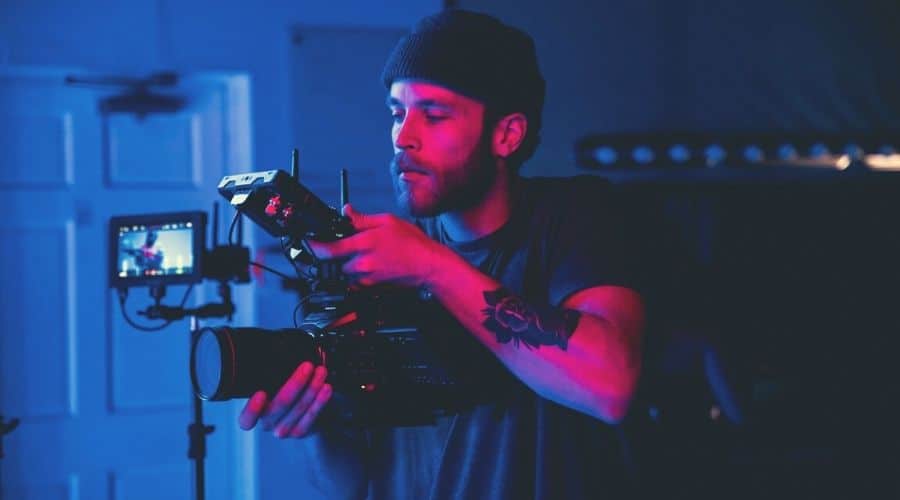
A camera with excellent video stabilization technology creates smooth, high-quality video, no matter how energetic the performance is.
A minimum of 3-axis optical image stabilization results in high-quality and crisp video recording capabilities even in challenging conditions, such as a crowded concert venue. The more axis featured, the greater the image stabilization. In today’s market, many cameras now feature 5-axis optical image stabilization.
Perfect for capturing those special and sometimes iconic moments, a camera with great image stabilization is capable of producing smooth footage.
Revolutionary video stabilization technology lets you capture stunningly clear and crisp videos without any camera shake.
Enhanced video stabilization is ideal for capturing live performances of your favorite performers. High-quality footage allows you to preserve the moment with lifelike details and vivid colors that can be enjoyed for years to come.
Exposure Compensation
When shooting in low light conditions and photographing concerts, exceptional exposure compensation is a priority feature.
Exposure compensation can be especially useful in concert photography where the stage and venue lighting can vary drastically from one moment to the next.
The combination of dark venues and vibrant stage lighting can be tricky to capture right. However, a camera with great exposure compensation performs superbly for crisp, clear imagery with vivid color.
With exposure compensation, you can ensure that your photos are properly exposed regardless of the changing lighting conditions.
ISO Range
One of the most important features of a camera for concert photography is its ISO range.
This allows users to adjust the sensitivity of the camera to light and capture better images in low-light situations.
An example of an impressive ISO range is the Nikon D3500’s which ranges from 100 to 25600, giving you plenty of flexibility when shooting in different lighting conditions.
With this impressive ISO range, you can take stunning photos in any environment and get the best out of your photography.
Battery Life
A decent battery life is crucial for concert photography.
Aside from image quality, battery life is of the highest priority for concert photographers who want to capture the perfect shot without worrying about running out of power.
It is hard to beat the Nikon D3500 in terms of battery life.
Sound
Whilst not essential for concert photography, great sound quality is required if you also want to use your camera for videography.
For amateur-level videography, the sound quality on many cameras is adequate. However, for more professional projects, a camera with advanced sound quality may be required.
With the right settings and accessories, you can get the most out of any camera. You can also use an external mic if you need higher-quality sound recording.
Best Camera For Concert Photography – My Verdict
Of the five cameras we have tested, we found the Nikon D3500 to be the best camera for concert photography.
The main advantage that sets this camera apart from its contenders is the battery life. Offering an impressive battery life with the ability to take up to 1500 photographs per charge, the Nikon D3500 leaps over the competition.
Not only does this camera have the most outstanding battery life, but it also features an incredible close-up capability and exceptional low-light performance.
Whilst the Nikon D3500 is the perfect choice for us, you may have different requirements.
Beginners to concert photography may find the Sony Alpha a600 more user-friendly.
On the other hand, amateur photographers may prefer something more lightweight and compact such as the Fujifilm X-T30.
Whichever camera you choose, these five cameras offer outstanding image quality and are the best cameras for concert photography on the market.

